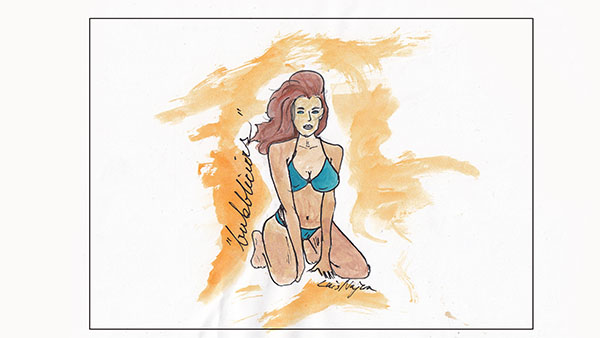American Apparel’s provocative ads and sexual exposure of the feminine physique are causing controversy to our conservative society. But women are sexy—so why do we care so much?

The flannel button-less shirts showing side boob and bare skin, as well as a face of sexual desire are causing major issues amongst those who see these advertisements.
With sweatshop-free sales tactics and a commitment to gay rights activism, Dov Charney, CEO of American Apparel, is wondering why people are so offended by the nature of the simplistic, and yes, sexual ads of his branding.
Charney’s suggestive advertisements are semi-pornographic and sexually compelling but so are Katy Perry’s music videos. The content of these ads are exposing—sure, but is there a greater message trying to be reached?
It is okay that we can play video games where you can slice people’s throats from behind, and kill strippers and run them over—but when it comes to an ad showing a young woman with her back arched, blowing a bubble with gum and wearing a translucent white tank with the word “Bubblicious” boldly written in the background it’s unacceptable?
Yes, these ads are overly sexualized and can be detrimental to our youth, but Charney has no incentive to change the nature of his explicit content. Instead of censoring your children by avoiding these ads, maybe they would allow for better communication between parent and child.
The adolescence stage for young girls can be one of the most difficult parts of growing up and while these ads can surely to the stress of trying to be “perfect,” so are the Barbie dolls whose unrealistic measurements would make any woman topple over.
Sex is embedded in our culture.
From an evolutionary perspective, it is something natural and real, but from a branding aspect, it’s money.
While these ads may be promoting more than the average pair of green tube socks or a basic white crop top (and no visible undershirt), its message is much more racy, yet subliminal.
If Charney’s goal is to create controversy and get people to look at his advertisements and want to go shopping at his stores, he’s doing an epic job at it.
The recent advertisement of a new store opening was the raw image of a girl in a black leotard with her legs spread-eagle and her hands raised above her head, not to mention…she’s lying on a bed. The ad was intended to be a promotional poster for a new location of an American Apparel store and the UK was not impressed.
The British Advertising Standards Authority banned the scandalous photo from ever making it into the public sphere. In an article by Veronica Ritter of The Upcoming, a British culture-based magazine— she wrote about the decision, “AA is a brand that is true to what they represent, which includes people’s flaws and imperfections.”
A public opinion website, Visual.ly designed a survey examining the “sexiness” of these promotional eye stoppers. In a recent poll, 54 percent of people voted the ad should be acceptable, while only 46 percent said it was “way too sexy.”
Our society seems to be blurring the lines between the content exposure from adults and children.
Just as any parent should feel worried about their child seeing explicit images before they are age-appropriate, it seems there is little to do about it. Maybe instead of covering our children’s eyes and sheltering them from our media-obsessed world, we could allow better communication and open discussion of sex and cultural norms.
As far as these advertisements go, let’s not forget, sex sells and always has.













